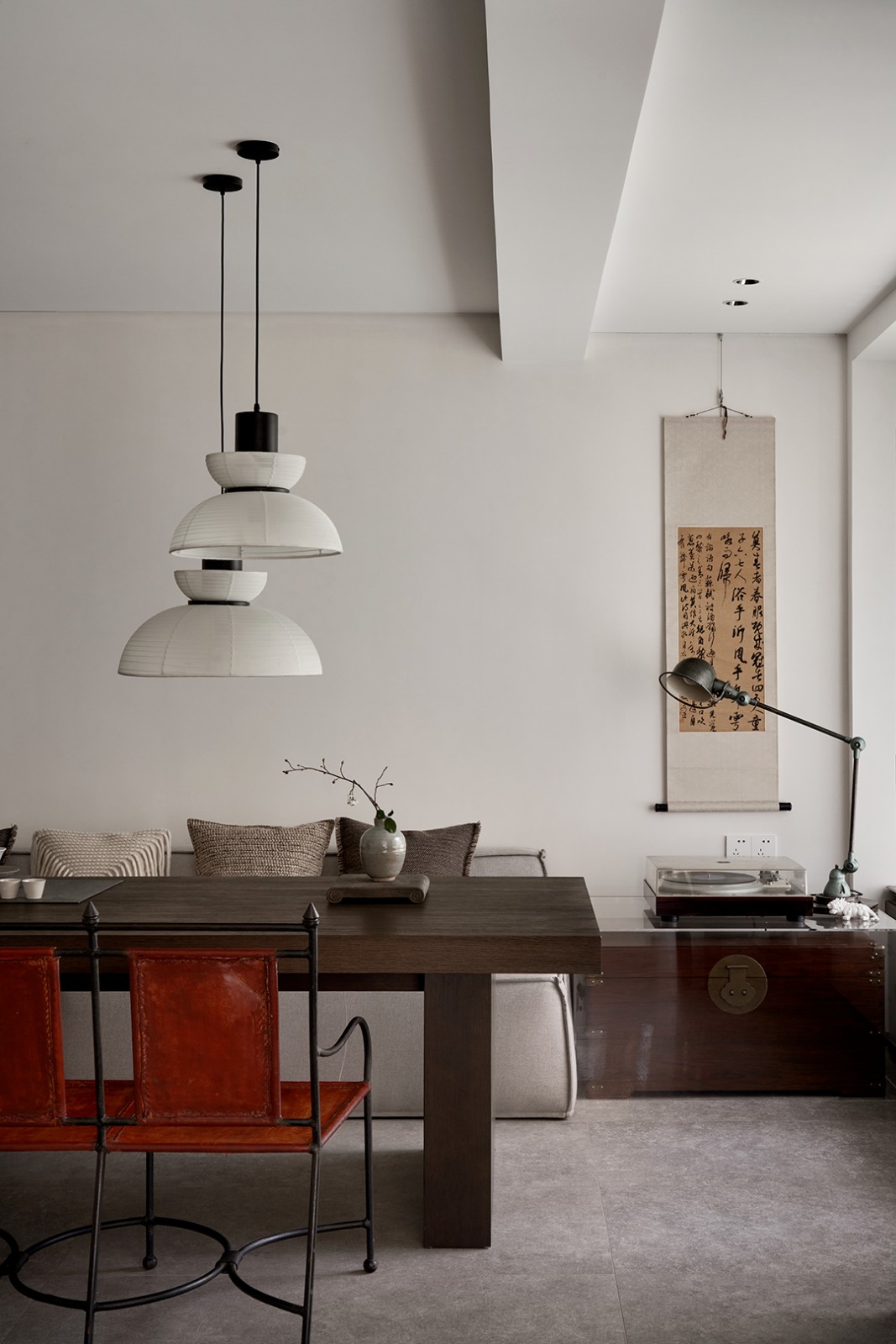Tung Ho Steel Enterprise Corp. Administration Building Che Fu Chang Architects
2016-04-09 20:00
Courtesy of Che Fu Chang Architects
车福昌建筑师


架构师提供的文本描述。炼钢是一个复杂的过程。挤压、滚动、延伸-动态流动产生了现代建筑结构的基本元素-钢筋。我们项目的一个主要目标是捕捉运动的突然性,这是一个承受压力、力量和热量的时刻。这种复杂性反映在建筑物的多方面功能,包括行政和住宿领域,以及食堂、礼堂和画廊。此外,一条按叙述方式安排的游客路线也被纳入建筑物的流通系统。这些特点也塑造了建筑物和连接桥梁。
Text description provided by the architects. Steelmaking is a sophisticated process. Extruding, rolling, extending—the dynamic flow gives birth to the basic element of modern building structure, the steel bar. A primary goal of our project was to capture the suddenness of the motion, a moment that sustains pressure, force, and heat. The complexity is reflected in the building’s multifaceted function, encompassing areas for administration and accommodation as well as a canteen, auditorium, and gallery. Moreover, a narratively arranged visitors’ route is integrated into the building’s circulation system. These features also shape the buildings and connecting bridge.
Courtesy of Che Fu Chang Architects
车福昌建筑师


该网站位于台湾桃源市,是一个交通高效的工业区.我们受托为该企业的炼钢厂设计一座行政大楼。需要特别注意的是多任务循环的必要性。预计这座大楼不仅将成为总部,而且还将成为一个非正式的画廊,与当地艺术家合作,展示公司的创新创意。此外,由于企业的规模(工厂的产品占台湾市场的绝大部分),需要容纳数百名员工。因此,建筑解决方案必须足够聪明,以避免拥挤的方式引导建筑物复杂的循环。
The site is located in Taoyuan City, Taiwan, which is a traffic-efficient industrial area. We were commissioned to design an administrative building for the enterprise’s steelmaking factory. What needed special attention was the necessity of a multi-tasking circulation. The building was expected to be not only a head office but also an informal gallery which, in collaboration with local artists, could showcase the company’s innovative ideas. Furthermore, due to the size of the enterprise (the factory’s product occupies a large majority of Taiwan market), hundreds of employees needed to be accommodated. Therefore, the architectural solution had to be smart enough to channel the building’s complicated circulation in a way that would avoid congestion.


这就是为什么我们提出了一个扭曲的建筑,利用一个地点在一个起伏的山。两个主要元素-部分隐藏在景观中的员工部分和顶部的管理卷-将一个提升的平台作为建筑物的公共平台,将两个集群连接在一起。这座三楼站台两侧开放,可作为游客的车辆到达,并在有机会时举办大型活动和展览。通过为访客和员工安排单独的接入点,我们能够优化车流,同时创建一个复杂的系统,它鼓励交互而不造成相互干扰。在行政层面,我们打开了屋顶,将阳光照射到室内,照亮了长廊所在的直线中庭。这座建筑的表情往往是谦逊的。我们没有堆放昂贵的石头和精致的装饰,而是把混凝土露在外面,用钢、玻璃、锌和预制混凝土板等基本材料来传达公司的商业文化,这种文化将诚实和正直的价值观与高度娴熟的细节设计结合在一起。连接的步行桥引导游客,作为制造基地和行政大楼之间的象征纽带。受这里制造的产品-变形杆-的启发,我们将桥脊的双螺旋转换成桥梁的结构体系,形成张紧的图像。
That is why we proposed a building with a twist, taking advantage of a site on an undulating hill. Two major elements—the employee’s section, partially hidden in the landscape, and the administration volume on top—sandwich a lifted platform that works as the common platform of the building, holding the two clusters together. This third floor platform, opened up on its sides, works as the visitor’s vehicular arrival and holds large scale activities and exhibitions when there’s occasion. By arranging separate access points for visitors and employees, we were able to optimize vehicular flow while creating a complex which encourages interaction without causing mutual interruption. Inside the administration level, we opened up the roof to conduct sunlight into the interior, lighting up the linear atrium, which houses the gallery. The building’s expression tends to be humble. Instead of stacking up expensive stone and elaborate decoration, we exposed the concrete and used basic materials such as steel, glass, zinc, and precast concrete panels to convey the company’s business culture, which combines values of honesty and integrity with highly skilled detail design. The connecting walk bridge guides visitors and functions as a symbolic link between the manufacturing base and the administrative building. Inspired by the product manufactured here—the deformed bar—we transformed the double helix of its ridges into the bridge’s structural system to compose a tensional image.
Courtesy of Che Fu Chang Architects
车福昌建筑师




































































Architects Che Fu Chang Architects
Location Taoyuan City, Taiwan
Category Institutional Buildings
Architect in Charge Che Fu Chang Architects
Design Team Yi He Hong, Heng Song Tong, Rosalind Wang, Pei Chen Yang, Chung Yin Wang, Ru Ting Zheng, Ren Yu Fang, Fu Yang Luo
Project Year 2012































